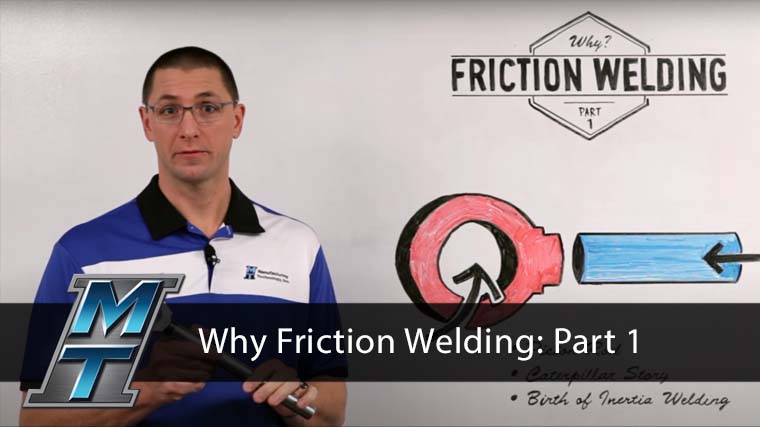
Friction welding in the United States started in the late 1960s when Caterpillar Tractor Company wanted to produce hydraulic cylinder rods, or piston rods.
A key challenge they faced was that many of these parts were made out of single-piece forgings, which were — and still are — very expensive to produce. When they examined all of their parts, they found they had a smaller number of eyes than clevises, and they wanted to be able to weld these rods to different lengths and diameters. Friction welding allowed them to create two-piece forgings that would be much less expensive to produce.
The friction welding process allowed Caterpillar to rotate the eye or the clevis, and hold the bar stock stationary. But this created two new problems:
- As the bar stock diameter got larger, the amount of torque requirement increased. This would cause the electric motor driving the eye or the clevis to stall. They had already had a similar issue with their diesel engine technology. So they knew that when motors stalled, they could add a larger and larger flywheel in order to overcome the torque peak.
- They found that the spindle thrust bearings could not withstand axial force while rotating. To address this, Caterpillar developed the hydrostatic thrust bearing, which allowed for higher and higher thrust forces while the spindle was rotating.
These two changes to the standard rotary friction welding process gave birth to the inertia welding process we know today. And they helped to accommodate changing manufacturing needs — making friction welding an excellent solution for a broad number of applications.
Have a big challenge ahead of you?
MTI serves industries ranging from aerospace to automotive and agriculture. And with Caterpillar’s heritage of innovation at the core of our latest technology, we’re poised to find effective solutions for your needs. We’ll build a machine for that makes your part, we’ll make the part for you, or we’ll help you make the part even better.
Learn more about the advantages of friction welding here. MTI UK
MTI UK  FWT
FWT